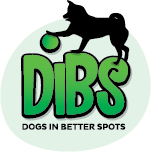For some dogs, going in the car means adventure. Are we going on a hike? Are we going to see family? Or maybe we are going camping! These are all positive associations with travel that some dogs make.
For others, their association with the car could be going to the vet or going to the groomer, which creates a negative reaction.
Lastly, for some dogs, their experience with the car is getting dropped off at a strangers house and never seeing their ‘family’ ever again.
Anxiety vs Car Sickness
It’s very easy to mentally lump car anxiety and car sickness in the same category. But, they are different things and typically car sickness is something a dog will grow out of as they mature: typically it’s an issue for the first year of their life. Just like with humans, our motion-sensing organs reside in the inner ear, motion sickness does not occur, suggesting that the inner ear is important in motion sickness. As long as their car associations are positive, they should outgrow this sickness once they are fully developed (fingers crossed!).
Car anxiety and car sickness can often get confused as the symptoms are similar:
- Pacing
- Excessive drooling
- Panting or licking lips
- Vomiting
- Diarrhea
For a rescue dog, car travel will be a new thing, so we tend to cut them a bit of slack if they don’t take to riding in a vehicle right away. What should you do about it if your dog exhibits these symptoms? Typically, we will take the approach of it being anxiety over motion sickness, and the following approaches address anxiety.
Create Positive Associations
- Short jaunts – If you live close to a park or beach, maybe take a five minute car ride and run around for 30 minutes then drive home. Or you can take an even simpler approach and drive down the street and back and then reward with dinner. Once your dog gets comfortable with these short five to ten minute trips, increase the car rides to fifteen to twenty minutes and then thirty to forty.
- Make it fun – a trip to Ren’s or Pet Valu to pick up a new treat is always exciting
Feeding Times
- Be mindful of a full tummy – don’t feed before a big trip and maybe save their meal for a reward once you arrive at your destination. Instead, decrease the size of their pre-trip meal
Creating a Comfortable Space
- Some dogs will feel better when confined to a car crate, a place they associate as their safe space. Bring their favourite blanket (machine washable) or a beloved toy as comfort.
- Ensure is that you keep the car cool and calm (this includes your choice of music – perhaps jazz vs loud metal)
Leave them at Home
- Not all dogs want to go to the store, or to go visit grandma. Some are happy to chill at home, and enjoy some quiet time while you do your thing!
It is important as dog owners to understand things from a dog’s perspective versus our own human perspective. A lot of dog owners will project fears or assumptions on their dog before trying to understand the WHY of an underlying behaviour. We hope that this article was helpful and if you have any questions, please reach out to your trainer. If you have not yet established a partnership with a trainer, and need help on getting your dog used to the car, please let us know and we can recommend local trainers. Our dogs bring so much love and happiness into our lives so this is the least we can do to make them a little more comfortable!
If car sickness continues, do check with your vet. They may recommend a calming solution, or they may prescribe a medicine like gravol. As always, meds are the last resort, and we hope the tips above help your pup learn to enjoy (or at least tolerate) a car ride.
Resources:
- https://vcacanada.com/know-your-pet/motion-sickness-in-dogs?fbclid=IwAR19WbhdH34CRBmQhOtobXhqjY4DPq9AjtsbZ3TKJKuEcqy5TL5p8Rl2I3s
- https://www.petmd.com/dog/conditions/digestive/c_dg_motion_sickness
